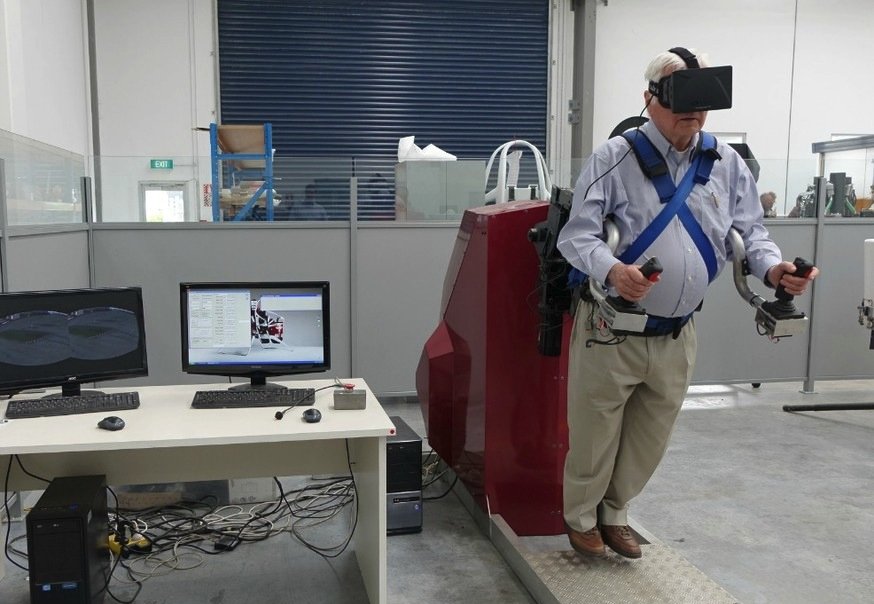
A substantial 50% stake in kiwi innovator Martin Aircraft, inventor of the Martin Jetpack, will in less than three years be owned by a Hong Kong-listed tech investment company KuangChi Science, a company chaired by a former Duke University boffin, Dr Liu Ruopeng, whose claim to fame include helping developed a way to produce an ‘invisible cloak’ that Harry Potter might be jealous of.
KuangChi Science in December 2014 signed an agreement which would allow it to invest up to A$50 million (NZ$53 million) in Martin Aircraft. Martin Aircraft is due to start trading on the Australian stock exchange on February 23, according to information from the exchange.
CEO of Martin Aircraft Peter Coker says KuangChi will, under the terms agreed upon, be making its investments over the next 30 month, giving it up to just over 50% of the company.
Hong Stock exchange-listed KuangChi Science will initially take up 52.5 million shares of Martin Aircraft’s IPO, at A$0.40 apiece, for A$21 million. The agreement teed up will also see KuangChi Science subscribe for convertible notes with a total face value of between A$23 million and A$29 million
According to The Press, founder Glenn Martin is selling 3.75 million of his shares to KuangChi Science, and will retain just under 16% of the company after the IPO is completed.
Coker says inventor of the Martin Jetpack and founder Glenn Martin is “delighted” with the deal.
Martin, the inventor, has been working on the jetpack since 1981, and the company has gone through various channels for funds, raising some $19 million for its development, including money from the government. In September, the company had a pre-IPO fund raising, tapping $6.5 million from high networth individuals.
Martin Aircraft was brought to KuangChi Science’s attention through an ex-director of Martin Jetpack.
“They were talking to one of our ex-directors (at a forum), came to know of us, and gained interest in what we are doing.” The Chinese followed this up with an intense three week of visits and fact finding, he says.
Good fit?
Coker says Kuangchi Science is a fine fit for Martin Aircraft given the former’s interest in novel, space technology.
He says Kuangchi Science has a number of disruptive technologies in the pipeline, including working on a space-based cloud, for large amounts of data transmission, and a balloon-based near-space travel venture, Traveller.
In November last year, Kuangchi Science announced the signing of an agreement with Airways New Zealand and another Chinese company, PengXin International, to refine and launch a near-space balloon for data transmission.
The balloon, known as Traveller, is about 40 meter in diameter, to be filled with helium, and will float at a height twice of that done by commercial airlines. In 2013, Google used New Zealand as a site to launch similar balloons as part of a project to deliver internet to remote areas.
KuangChi Science and its related entities have been involved in lightweight materials used as part of aeroplane manufacture; a film coating wifi transmitter to reach difficult locations, such as in subways.
Coker says KuangChi Science’s expertise in material science will help Martin Aircraft. “They have tremendous meta materia technical knowledge, and will be helping with looking into methodologies on how we can use lighter material, for longer flight.” The company also hopes to leverage KuangChi’s knowledge to reach the Chinese market.
Liu and the invisibility cloak
Not much is known in the New Zealand media scene about Liu and his team. Information that is publicly available shows that Liu was an apprentice with leading global authority on meta material Professor David Smith, of Duke University, where Liu did his PhD. He has scores of scientific papers published on meta material, and holds a number of patents, including that for man-made composite material, front feed microwave antenna, meta material for deflecting electromagnetic wave and wave absorbing material
In 2009, Smith, Liu and a team of scientists published work on their invisibility cloak. Liu was credited with having developed the algorithm enabling electromagnetic waves, such as light, to be bent in such a way that it appears as if the cloaked object is not there. Cloaking devices have potential applications in improving wireless communications, or acoustic cloaks could serve as protective shields, preventing the penetration of vibrations, sound or seismic waves,among others.
Liu is also one of a team of high-powered Chinese scientists who helped set up the Shenzhen KuangChi Institute of Advance Technology.
KuangChi Science is a company formed out of Climax International, formerly a paper products company, after a capital reinjection by New Horizon Wireless Technology. Besides the Traveller project, KuangChi Science is also working with PengXin Global Resource in Congo, where PengXin will pay Kuang-Chi Science HKD 15 million to get space technology advisory service for a six month period in Africa. Kuang-Chi Science and Penxin Resource will also set up a co-partnership company in Africa on the basis of obtaining relevant license so as to offer continuous novel space service for the local people.




